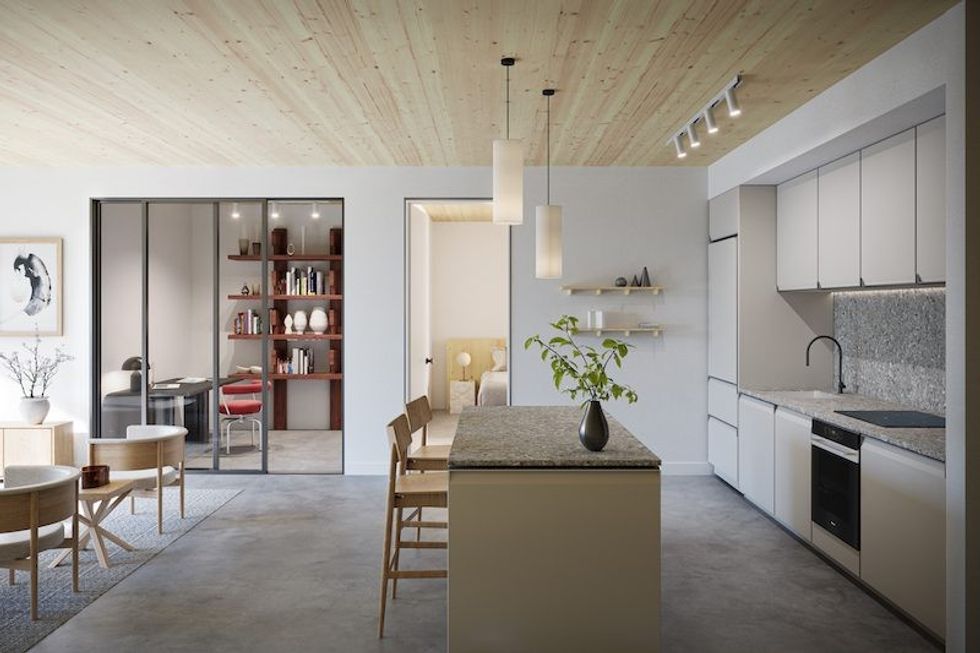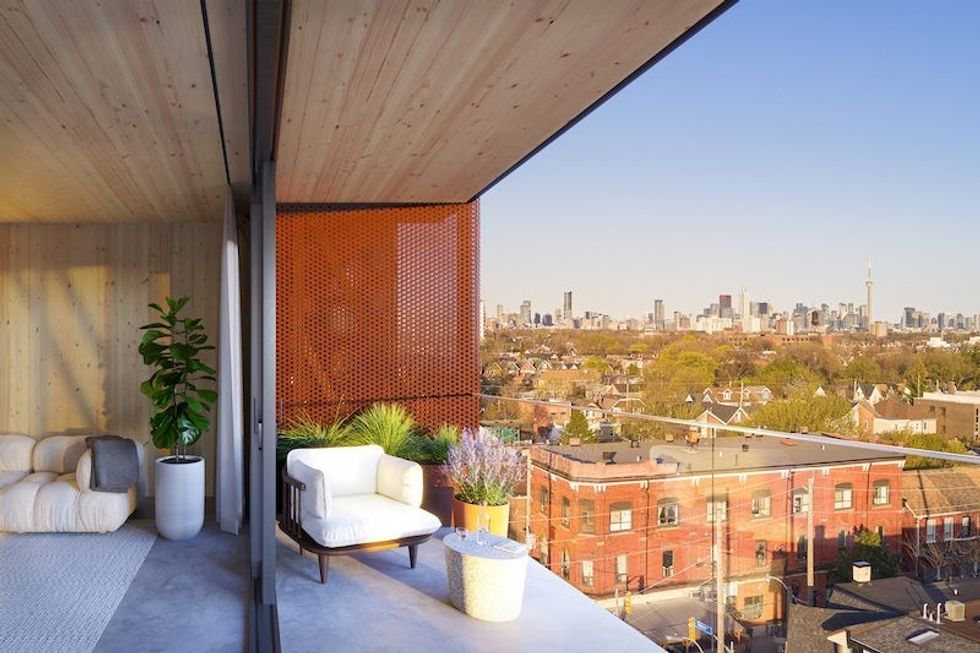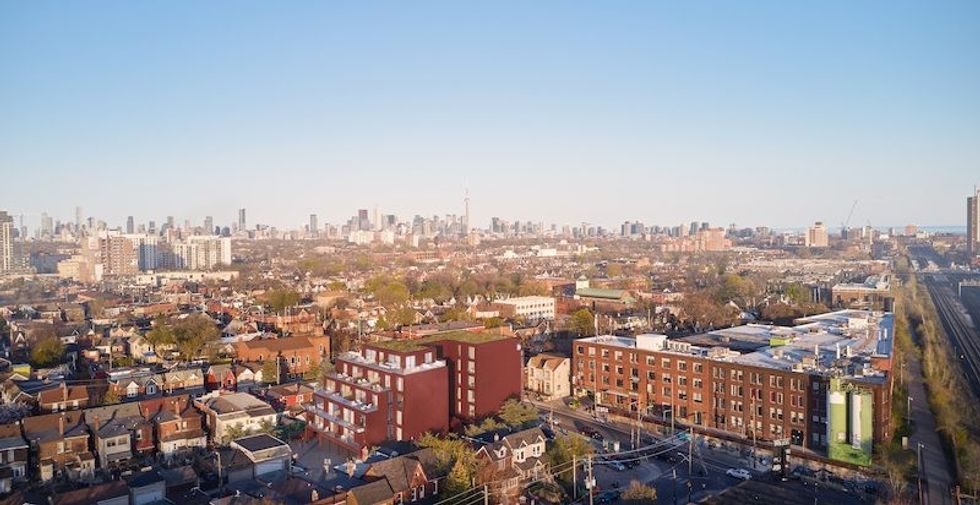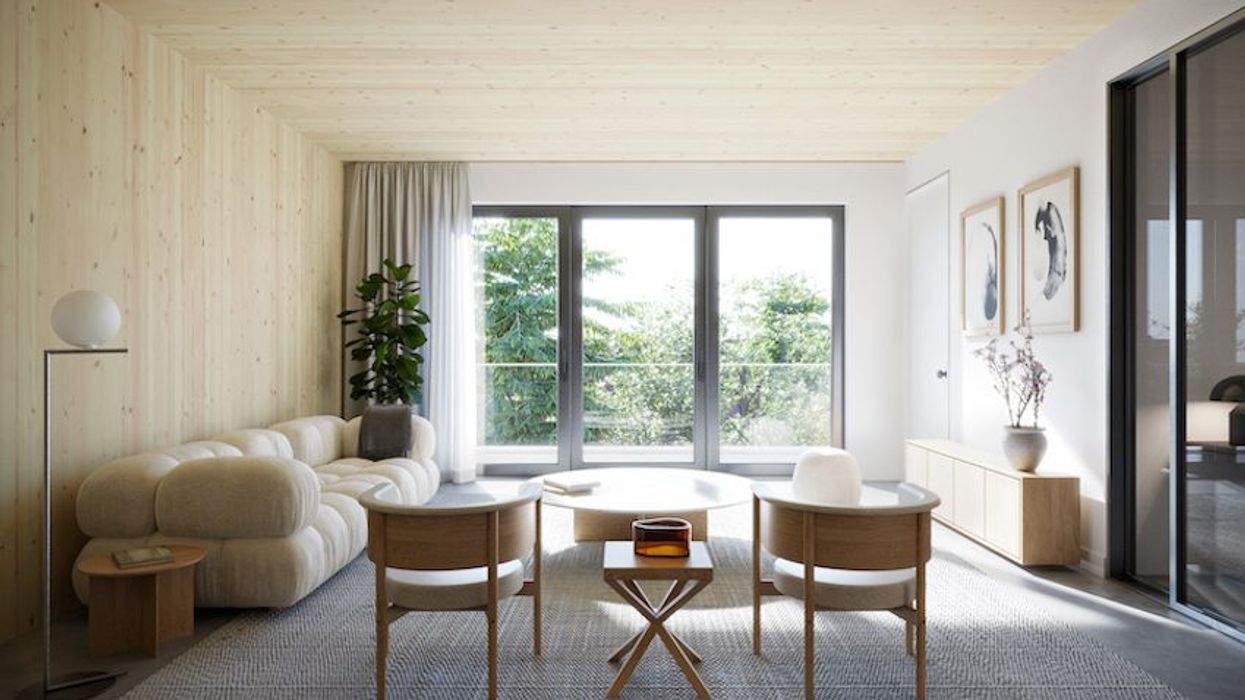Sustainability has become a top priority among consumers, business owners, and decision-makers alike, as Canadians collectively strive to reach net-zero emission targets by 2050.
Through this transition, society is undergoing massive changes, which are impacting nearly every sector of the economy — and the real estate industry is no exception.
We’re still relatively early on in our journey toward sustainable building practices. However, a new build rising in the Junction Triangle is paving the way for the industry as a whole, while setting a new standard for sustainable construction in the city.
Grain Lofts, coming to Dupont Street via Gairloch Developments, in collaboration with Gabriel Fain Architects and Unique Urban Homes, will be built using cross-laminated timber (CLT) — an energy-efficient, sustainable alternative to traditional concrete high-rise buildings.
Why is CLT a sustainable option over concrete? While concrete makes up approximately 8% of the world’s carbon emissions, timber actually removes carbon from the atmosphere, meaning buildings made with CLT have a negative carbon footprint.
To help paint the picture, consider that an 18-storey building made with CLT has the same environmental impact as taking 2,350 cars off the road each year.
CLT is also much lighter than concrete, which reduces shipping costs and ultimately cuts construction time by up to 25%. That means less disruption for the surrounding neighourhood, a quicker construction cycle, and a means to improve the feasibility of boutique buildings in a rising-cost environment.

Now, while the development is incredibly sustainable (and utilitarian-chic, the use of perforated and corrugated metal panels considered), quality and comfort remain top priorities, too.
According to Gabriel Fain, founder of Fain Architects, “CLT panels [are] extremely strong, since each layer of timber is glued at 90 degrees to the layer[s] above and below, giving the product strength in both directions. In fact, CLT has very similar characteristics to that of pre-cast concrete panels.”
And when it comes to the abodes themselves, the intimate building is comprised of just 28 suites, all of which are notably spacious. Housing fewer suites naturally results in those units boasting larger floor plans; at Grain Lofts, average suite size is just under 900 square feet.

According to Paul Johnston of Unique Urban Homes, the condominium is filling the gap of a much-needed housing type in the city's market.
“I’m excited for Grain Lofts, as I’ve been looking at missing middle buildings – from four suites to about 35 – for the past several years as I believe it’s the type of housing that many people in Toronto crave.”
Grain Lofts is the first condominium building by Gairloch Developments to use mass timber, and is the first residential condominium CLT building in the city that Johnston knows of.
“While mass timber construction is an established and commonplace method of construction in so many places, only recently has it become an option for builders in Toronto,” says Johnston. “There are a growing number of CLT office and residential buildings in the city, thankfully”.

“Gairloch is proud to be at the forefront of CLT," Johnston says, "and I’m very excited to be a part of it as I believe that mass timber building presents a very unique opportunity to introduce modestly-scaled buildings into some of our residential neighbourhoods.”
This article was produced in partnership with STOREYS Custom Studio.





















